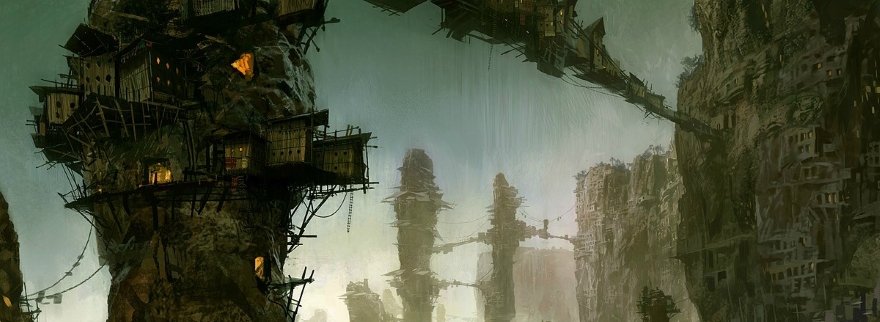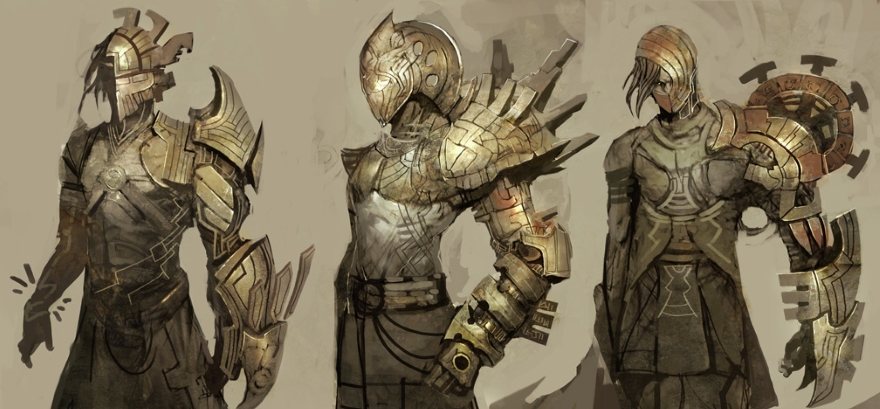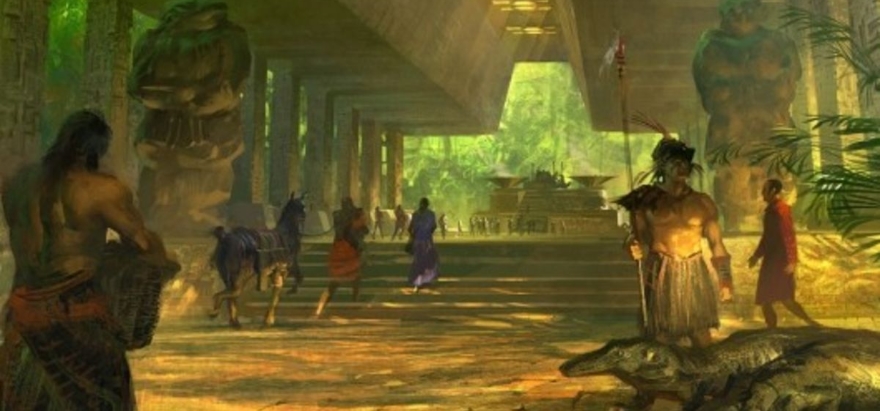
Aztecs. Chronomancers. Mounts. Halberds. Golems. Dual wielding.
These are all but a hint of what a fourth Guild Wars campaign could have been, a campaign that was under development in the mid-2000s but was scrapped by 2007. Replacing it was the expansion Guild Wars: Eye of the North and the workings of a super-secret sequel to the game (which you’ve probably never heard of). It was the forgotten campaign, swept under a rug while it was still under the rug.
But what if, in some alternative timeline, ArenaNet had gone ahead with this campaign? What if it had become an established part of the Guild Wars legacy, as familiar to us today as Nightfall and Factions?
What if Guild Wars Utopia had lived?
Frozen paychecks
From the get-go, Guild Wars had a much different business model from anything else in the MMO industry. In a time when most every game was subscription-based, ArenaNet decided to go a different way by making its cooperative RPGs subscription-free and charging the player only the sticker price of the box.
To make a profit and stay afloat, the studio created a platform that was cheaper to run than traditional MMOs and then vowed to release a new “campaign” — a stand-alone Guild Wars title that was connected to the rest — on a regular basis. The idea was that players would be paying for new content, not the time it took to play it. And it worked, at least for a while.
The initial title, Guild Wars Prophecies, was released in April of 2005. Exactly a year later, Guild Wars Factions came out, followed by Guild Wars Nightfall in October 2006. By then, players were assured that the ArenaNet content factory was up and running strong, and considering the millions of copies sold, the company was making a tidy profit.
But then the process stuttered and halted. Players finished up Nightfall and then found themselves waiting for the next chapter of their journey. The rumor was that ArenaNet was hard at work on a fourth campaign for 2007, which would have made sense considering the rollout of the three prior campaigns.
Instead of moving forward on the new campaign, ArenaNet made two momentous announcements. The first was that the campaign had been scrapped in favor of doing a first-ever expansion for the game. The second was that the expansion would mark the end of Guild Wars box products and work would begin on a full-fledged sequel. From there, I think we all know how it played out.
Campaign four
I’ve always been fascinated with Guild Wars Utopia ever since hearing about it a while back. I was never as deep into the Guild Wars scene as some, so while this may have been common knowledge for many, it was news to me. As you well know, the possibilities of “what if?” always torment and tease me so, which is why I’ve been dying to do an article on this aborted fourth campaign.
The truth is that what we do know is patchy and fairly incomplete. Unlike some other canceled-before-their-time titles, Utopia was never shown to the public, and apart from a mention in a single publication and some concept art, the studio’s never seemed overly eager to talk about it.
However, from a 2007 issue of PC Gamer, we did learn a lot about why Utopia was canned. To sum it up, the team was starting to realize that by churning out campaign after campaign, the game was quickly becoming insanely complex and difficult to balance. On top of that, many of the ideas that the devs wanted to implement simply weren’t doable within the framework of the game itself.
These ideas quickly morphed into something larger and more breathtaking than a new campaign. “We kept changing the scope of what we were doing, until it became Guild Wars 2,” Game Designer Eric Flannum said.
South American party people
The Guild Wars world tour, starting with Europe (Prophecies) and going to Asia (Factions) and Africa (Nightfall), was set to visit South American themes with Utopia. From the gorgeous concept art that was shown, it’s clear that Aztec themes ran rampant throughout this campaign. One of the pieces showed a combat arena with a cheering crowd surrounding strange pillars.
The main villains of the campaign were to be a bloodthirsty race known as the Tannecks. Some have speculated that when the game’s assets were repurposed for the expansion, the Tannecks became Eye of the North’s Destroyers.
As with the previous two campaigns, Utopia was to introduce a pair of additional classes: the Summoner and the awesomely named Chronomancer. (It’s important to note that these are purportedly fan-given names based on concept art and not necessarily what ArenaNet had in mind.) Between the Chronomancer class and some of the images of futuristic, clockwork-like settings, it’s reasonable to speculate that themes of time and possibly time travel were involved.
The Asura and their golems were probably part of this setting as well, and fortunately, they survived the transition to the expansion. The Sylvari possibly had their roots in Utopia as well in the form of a similar race called the Sidhe, which had Irish and Scottish roots.
Another possible idea for the campaign may have been — gasp — mounts. This seems exceedingly strange, as Guild Wars has always been a mount-free title. How different would it have been if players could hop up on a horse or beetle or fire dragon and gallivant across the landscape? Sadly, we’ll never know.
Shelved for greater things
So what would the gamescape look like if Utopia had released? Considering that the sketchy information we have is more or less from one source and came out after the title’s cancellation, I think it’s hard to make that call. Given the past campaigns’ successes, we can reasonably assume that it would’ve sold well and been embraced by the Guild Wars community. But past that? I’m not sure.
The biggest elements that stir my imagination are the inclusion of mounts and the Chronomancer class. Both feel like something we certainly never experienced before in the game, and in the case of mounts, it could’ve had a huge ripple effect on how we would’ve played it. I do like the Aztec theme, even if it sort of seems similar to the tribal themes of Nightfall.
However, I’m not mourning the loss of Utopia for two reasons. First, ArenaNet was right: The game was quickly becoming over-complicated with too many skills and classes, and at some point, that was going to drag everything down into a huge morass. Second, Utopia’s death was the birth of Guild Wars 2, and I’ll take that any day of the week and then some.
Ultimately, Utopia remains a curiosity that ArenaNet doesn’t appear to want to discuss much and that most of its fans have since forgotten. At least fans have gotten to experience many of its lore, features, and ideas in both the expansion and the sequel, and that should satisfy most.
 Believe it or not, MMOs did exist prior to World of Warcraft! Every two weeks, The Game Archaeologist looks back at classic online games and their history to learn a thing or two about where the industry came from… and where it might be heading.
Believe it or not, MMOs did exist prior to World of Warcraft! Every two weeks, The Game Archaeologist looks back at classic online games and their history to learn a thing or two about where the industry came from… and where it might be heading.

















